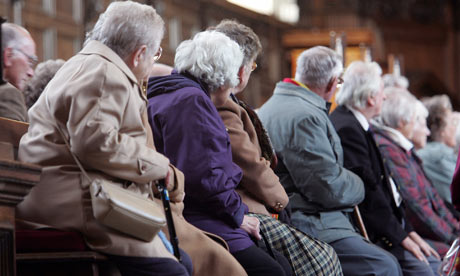
In the average person’s mind, scoliosis is associated with children and adolescents and the prevalence of scoliosis amongst adolescents is 4%. Surprisingly, in adults in general, scoliosis is over 20%. It increases to 40% in adults over age 60 and to 68% in adults over age 70. Two thirds of the elderly population has scoliosis AND pain associated with scoliosis is common in older patients. Not to be confused with Adult Idiopathic Scoliosis, Adult Scoliosis or Adult-Onset Scoliosis is a Degenerative scoliosis, or a side-to-side curvature of the spine caused by degeneration of the small joints of the spine. Degenerative scoliosis is found only in older adults, most frequently in people over age 65. Adult-onset scoliosis affects more of the spine, including the neck. Typically a C curve scoliosis forms in the lumbar spine. It can occur due to degeneration in the spine, also known as Spondylosis. Weakening of the normal ligaments and other soft tissues of the spine combined with abnormal bone spurs can lead to an abnormal curvature of the spine. The spine can also be affected by osteoporosis, vertebral compression fractures, and disc degeneration. Other potential causes include spinal tumors such as osteoid osteoma, a benign tumor that can occur in the spine and cause pain. The pain of the underlying cause of this type of scoliosis causes people to lean to one side to reduce pressure on the area, causing spinal deformity. Degenerative scoliosis is the most common form of scoliosis in adults.
What causes Degenerative Scoliosis?
Degenerative scoliosis is caused by a gradual deterioration of the facet joints (small stabilizing joints of the spine located between and behind adjacent vertebrae). This is the same process of gradual wear and tear, causes
Degenerative scoliosis is a common condition, occurring in 6-68% of older adults depending on the type of scoliosis.
What are the Symptoms of Adult-Onset Scoliosis?
As we get older cartilage on the joints can naturally erode. In the spine this cartilage in the facet joints contributes to the spines flexibility. When the facet joints deteriorate it can become painful for the spine to flex and bend as usual. Without the protective cartilage the joints become irritated and inflamed causing pain in the spine. Pain is present in some patients, but not all. Patients may experience stiffness and pain in the mid to lower back and/or pain, numbness and weakness in the legs and feet.
Back pain from degenerative scoliosis comes on gradually and worsens over time. The pain is typically worse in the morning, improves slightly once the patient has become more active, and then worsens at the end of the day. Typically, sitting provides more comfort than standing or walking because the facet joints receive less pressure in this position. As the facet joints get irritated and inflamed, they aggravate lumbar stenosis. Nerve root inflammation can cause further constriction. These nerve roots affect the legs and therefore leg pain in one or both legs can be felt when standing or walking. Sitting allows the blood to flow and can relieve this pain.
What is the Scoliosis Treatment for Adults?
Elderly individuals with degenerative scoliosis need to avoid or modify activities that aggravate symptoms and cause pain.
Your specialized scoliosis exercise doctor will recommend adult scoliosis treatment, specifically designed for older adults with scoliosis. This will include adult scoliosis exercises that will improve scoliosis by loosening muscles and correcting imbalances that are causing the spine to curve. Elderly scoliosis patients can also benefit from gentle Chiropractic treatments.
Patients with severe scoliosis (curves greater than 60 degrees) may rarely be candidates for surgery, but of course the risks associated with surgery increase with the age of the patient.
How does Adult Scoliosis differ from Idiopathic Scoliosis?
With Adolescent Idiopathic Scoliosis, the cause is unknown and patients rarely feel pain because of the scoliosis itself. However, degenerative scoliosis is caused by the deterioration of the facet joints in the spine due to aging. Though the curve that results from this typically progresses 1 to 2 degrees per year, the inflammation of the degenerated facet joints causes pain, not the curvature. Therefore, treatment is focused on both managing pain as well as stopping curve progression.
With age, the correction that can be achieved will be limited by degenerative changes, such as arthritis, in the spine. The first priority is always to eliminate pain, then stop curve progression, and ultimately (to a more limited extent than in an adolescent) reduce the size of the curve.
If you are older do not give up! In most cases, pain can still be eliminated and prevented from recurring and curves can be stabilized.